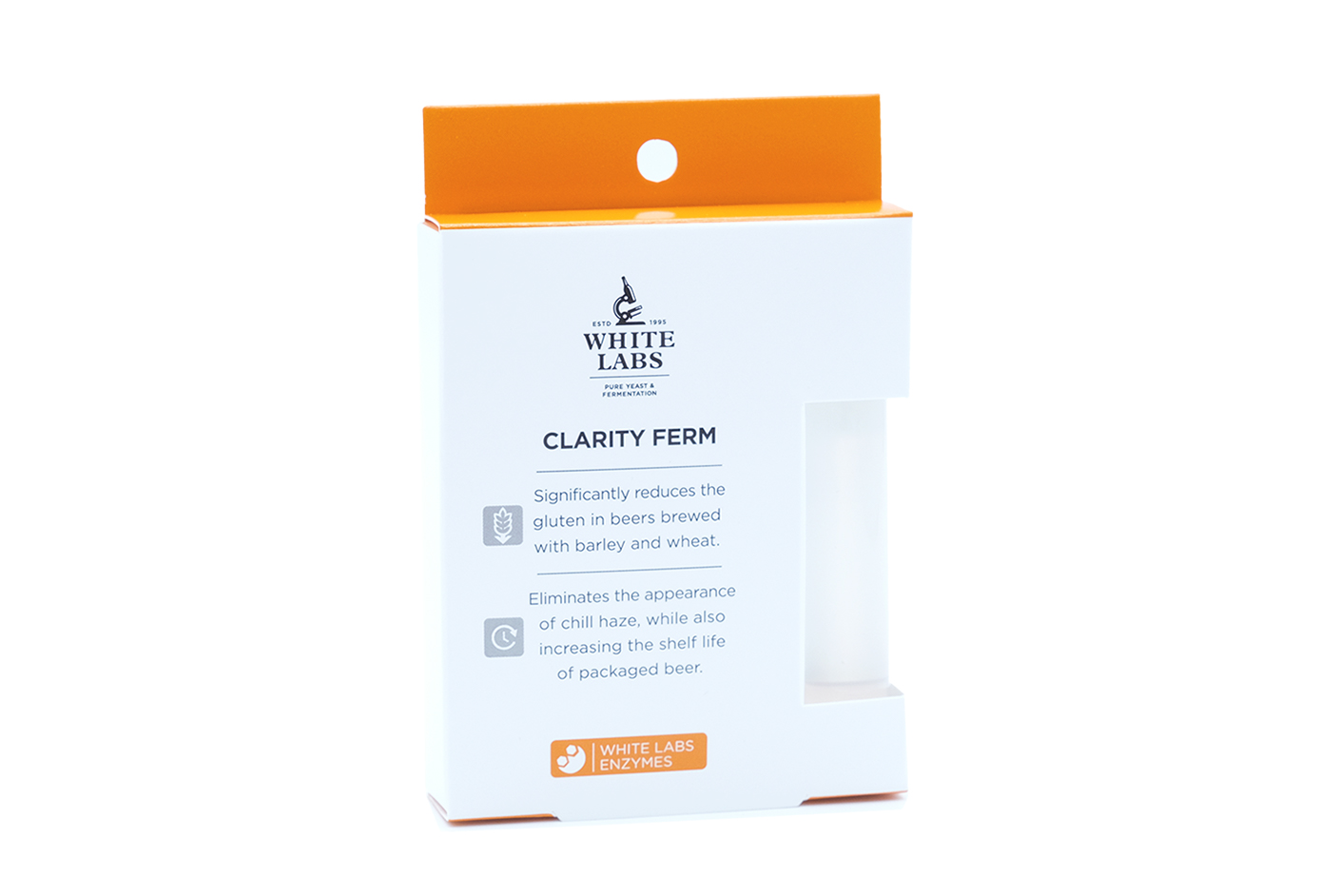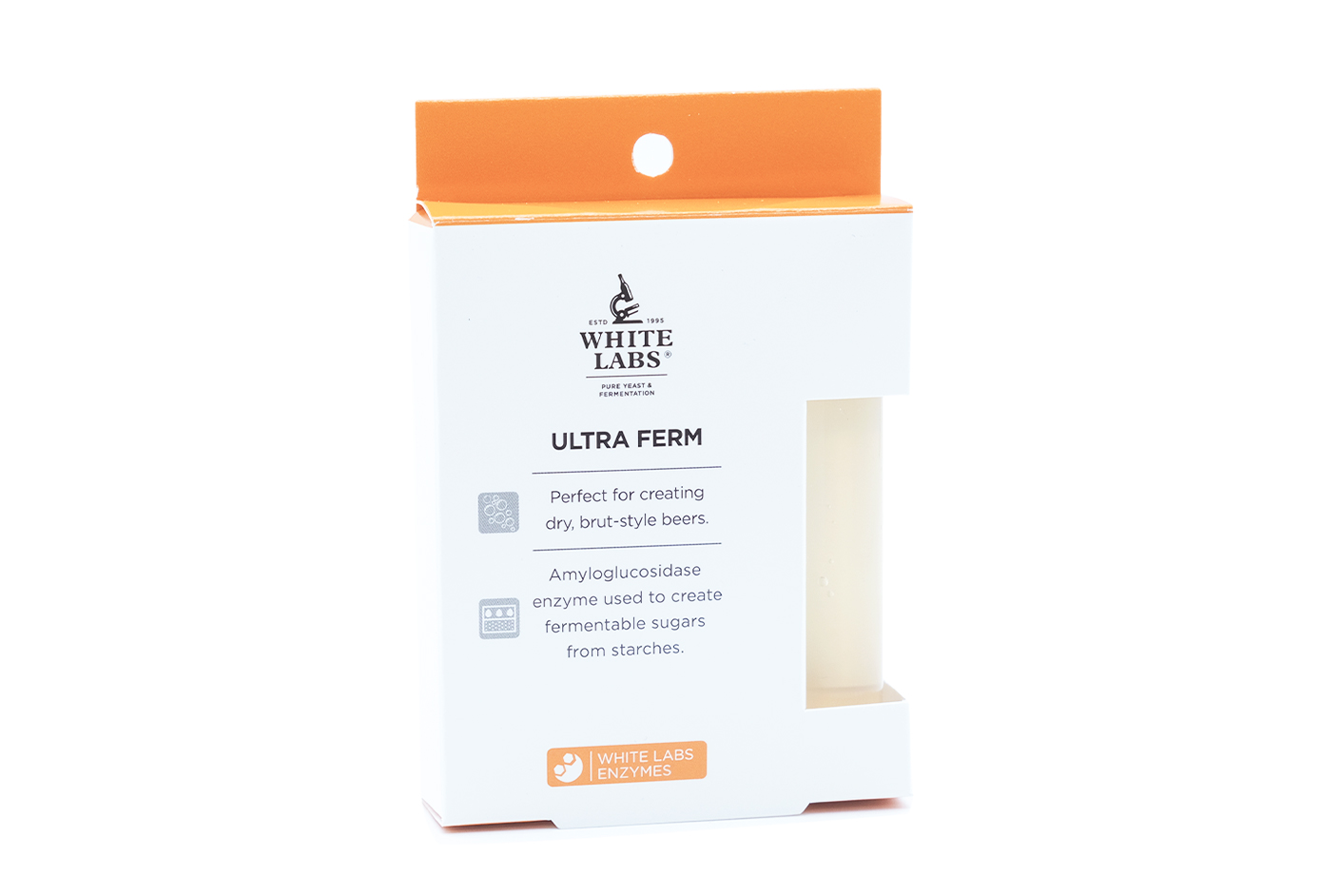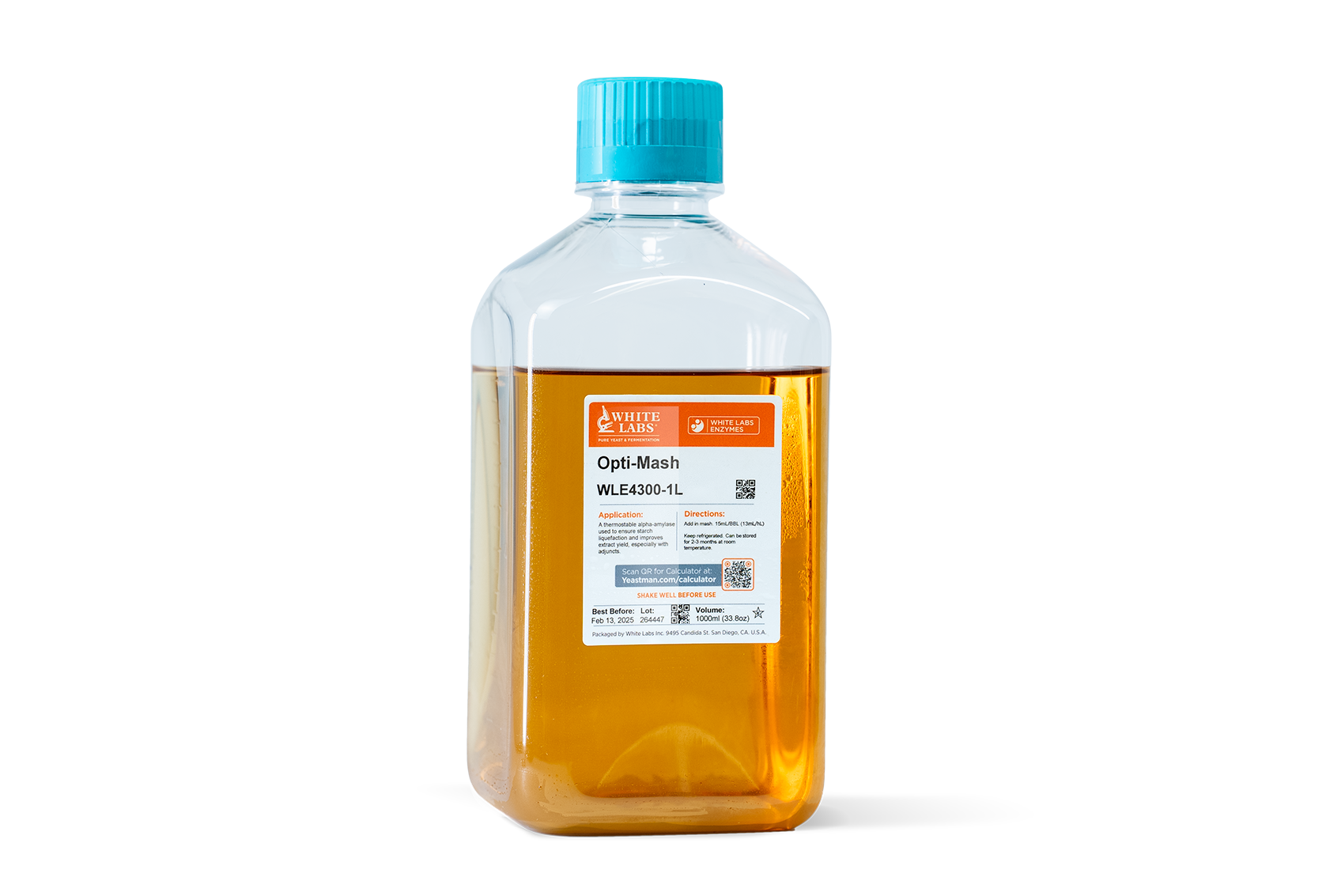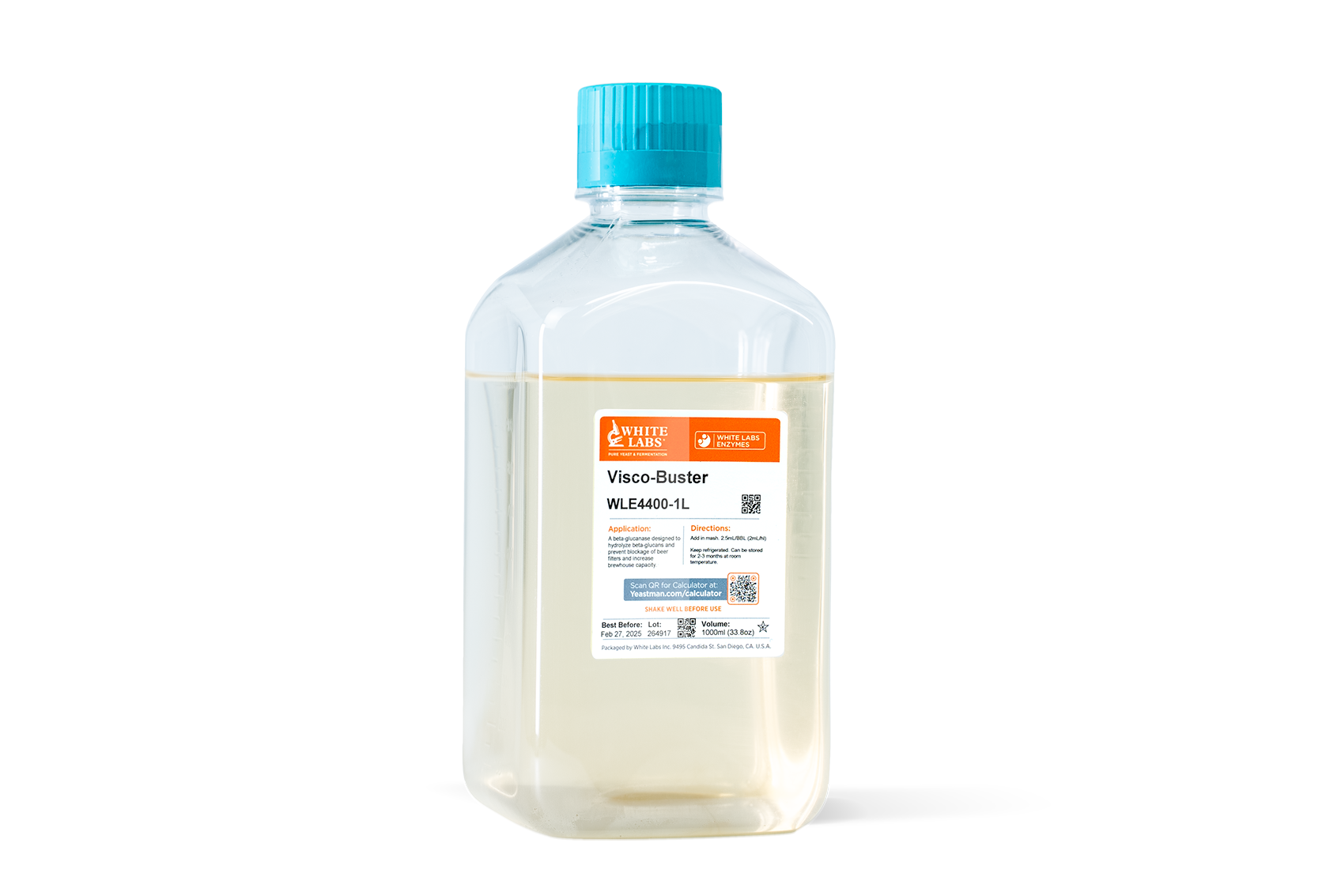Brewzyme-D
- Part No: WLE4900
- Category: Enzymes
- Packaging: 10mL, 1L, 10L
Stop Diacetyl in its tracks
Prevent the Formation of Diacetyl during Fermentation.
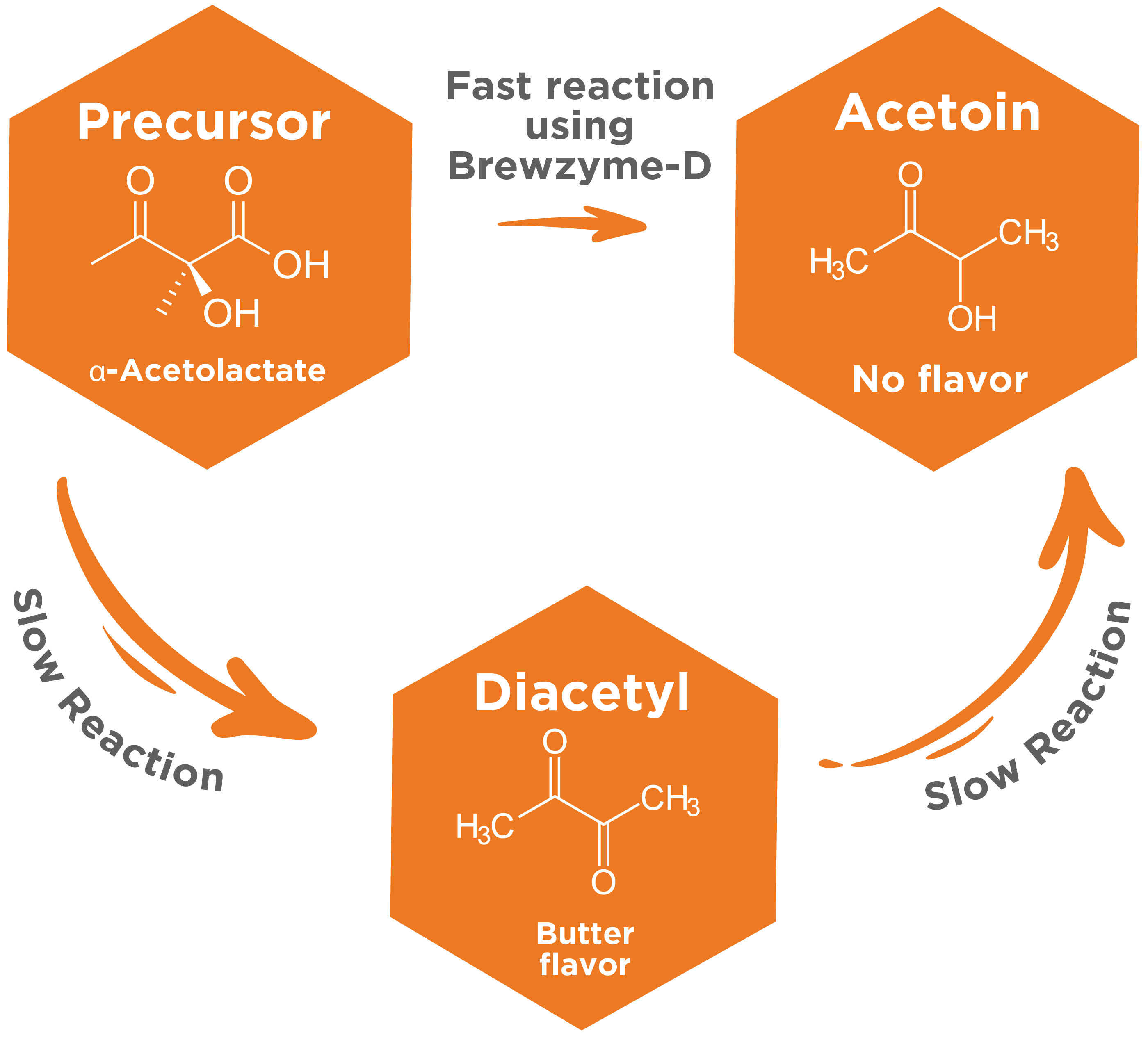
Made with Alpha Acetolactate Decarboxylase (ALDC)
- Eliminates the risk of diacetyl formation in your beer.
- Reduces maturation time = Faster Beer Turnaround Timelines.
- Improves overall beer quality.

Prevent hop-creep in dry hopped beers
Add during dry-hopping to thwart secondary formation of diacetyl.

Save Time & Money
Reduce the maturation time of lager by up to two weeks.
Eliminate the risk of diacetyl formation in your beer with Brewzyme D. Adding Brewzyme D with your yeast pitch results in the decarboxylation of alpha acetolactate to acetoin. Breaking down the precursor to diacetyl during fermentation prevents diacetyl from forming, reducing maturation time and improving overall beer quality.
Calculate Your Optimal Brewzyme-D Dosage for Your Brew
Dosage:
Pro (1L, 10L): 15-20mL/hL(0.84 BBL)
HB (10mL): 10mL/ 20L(5Gal)
Activity Range:
pH: 4.0-7.0
Temperature: 50-104°F (10-40°C)
Storage:
Temperature: 32-50°F(0-10°C) Do not freeze.
Location: Sealed and away from sunlight.
Shelf Life: 18 months from manufacture date, when stored as recommended.
What's The D With Brewzyme-D?
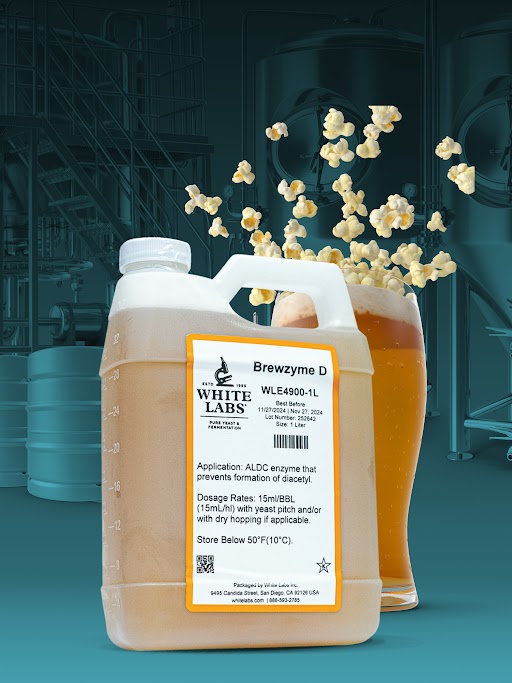
FAQ
My pH and temperature are out of spec for the enzyme?
While not optimal, the enzyme will is still active within fermentation temperatures, and dosage rates have been accounted for that.
Will there be zero diacetyl in my beer?
Due to enzyme kinetics, the amount of diacetyl will rarely be zero but will be far below flavor and aroma thresholds when used properly.
How does it work?
Brewzyme-D converts diacetyl precursor(Alpha Acetolactate) to acetoin, a flavorless and odorless compound, and skips the diacetyl pathway.
When do I add it?
At yeast pitching and/or at dry hopping
Can I add it when the beer is cold?
The enzyme works within the range of 50-104°F (10-40°C)
Is it GMO?
No
Are there different dosage rates for ales vs lagers?
No, the dosage rate is developed to cover all types of fermentations.
Will I need a new dose if I'm reusing my yeast?
Yes, recommend a new dose for every batch of beer.
Can't I just double the dosage for fermentation and dry hop?
Potentially, but for best results, add once during initial fermentation and another for dry hopping as it will ensure the best enzyme performance.
What happens if my product wasn't stored warm?
Typically the product should still be active. It will likely lose some activity rate over a year. If you are worried about enzymatic activity, increasing the dosage rate can ensure adequate conversion.
Will I need to perform a diacetyl rest when using the enzyme?
With proper dosing, a diacetyl rest isn't required.
What is the difference between adding Brewzyme-D, an exogenous enzyme, versus using a GMO strain engineered to produce ALDC?
By adding the Brewzyme-D it can be dosed consistently rather than relying on the yeast to make the correct conversion rate.
Can I add this to finished beer to remove diacetyl?
No, Brewzyme-D does not work on free diacetyl.
Info Sheets
WLE4900-ProWLE4900-HB
Diacetyl & Brewzyme-D Blog
What is Diacetyl Blog
Technical Data Sheet
Brewing a SMaTH IPA w/ Brewzyme-D
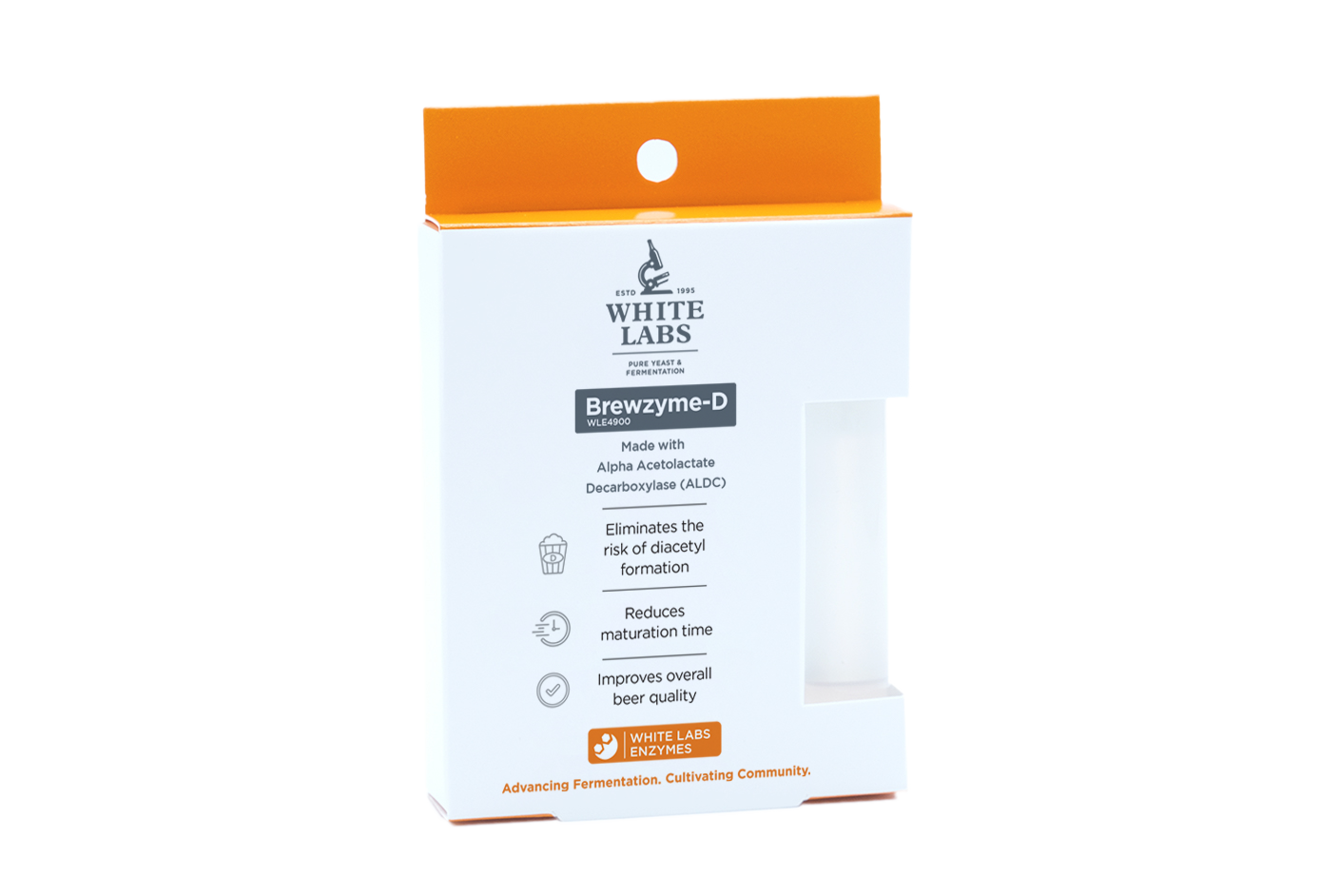
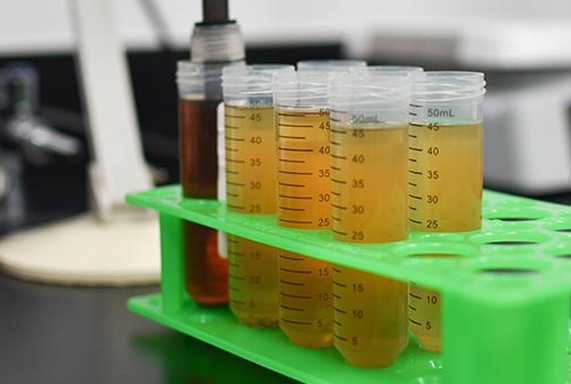 Yeast & Bacteria Bank
Yeast & Bacteria Bank
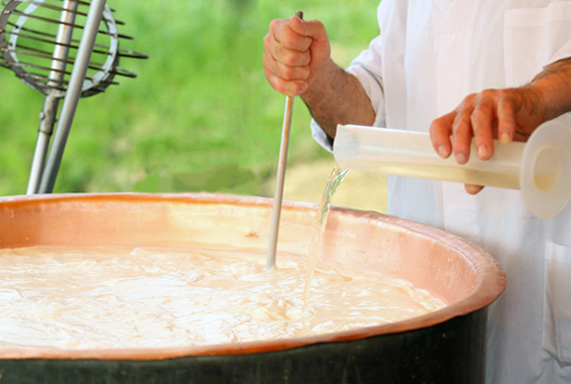 Enzymes & Nutrients
Enzymes & Nutrients
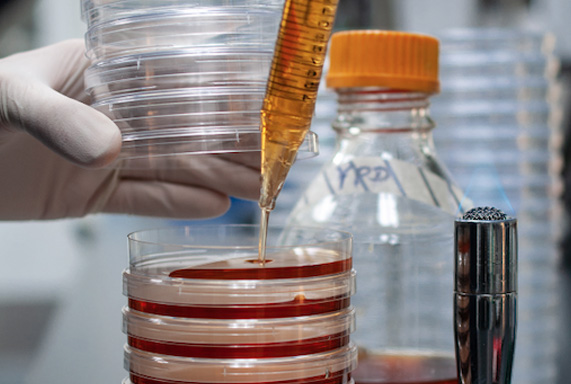 Lab Services
Lab Services
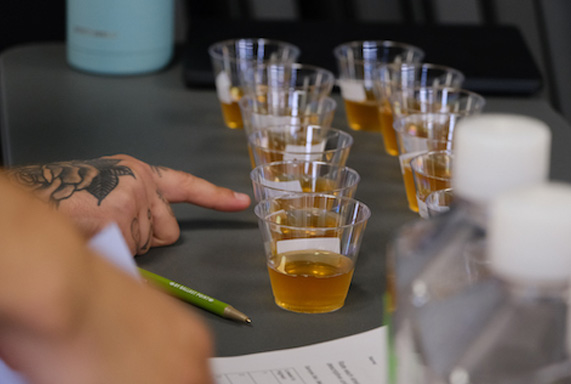 Education
Education
 Merchandise
Merchandise
